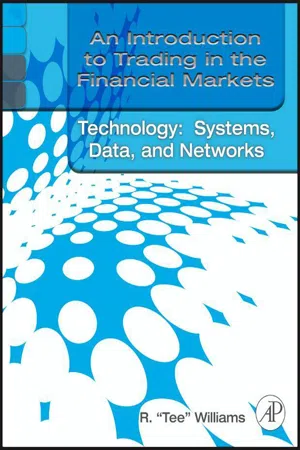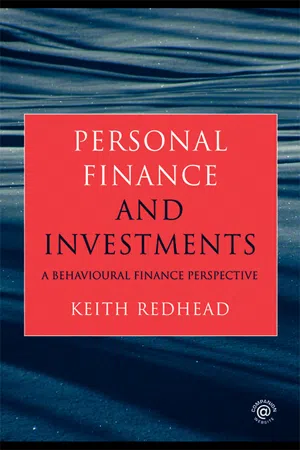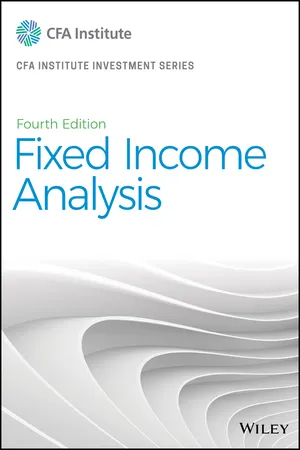Economics
Primary Market
The primary market refers to the financial market where new securities are issued and sold for the first time. It is where companies raise capital by offering their stocks or bonds to investors. In this market, the securities are purchased directly from the issuing company, and the proceeds from the sales go to the company issuing the securities.
Written by Perlego with AI-assistance
Related key terms
7 Key excerpts on "Primary Market"
- eBook - ePub
Corporate Finance
Theory and Practice
- Pierre Vernimmen, Pascal Quiry, Yann Le Fur(Authors)
- 2022(Publication Date)
- Wiley(Publisher)
secondary market. Both markets, like any market, are defined by two basic elements: the product (the security) and the price (its value).Thus, shares issued or created when a company is founded can later be floated on a stock exchange, just as long-term bonds may be used by speculators for short-term strategies. The life of a financial security is intimately connected with the fact that it can be bought or sold at any moment.From the point of view of the company, the distinction between the primary and secondary markets is fundamental. The Primary Market is the market for “new” financial products, from equity issues to bond issues and everything in between. It is the market for newly minted financial securities where the company can raise fresh money.Conversely, the secondary market is the market for “used” financial products. Securities bought and sold on this market have already been created and are now simply changing hands, without any new securities being created and consequently without any new money for the company.The Primary Market enables companies, financial institutions, governments and local authorities to obtain financial resources by issuing securities. These securities are then listed and traded on secondary markets. The job of the secondary market is to ensure that securities are properly priced and traded. This is the essence of liquidity: facilitating the purchase or sale of a security.The distinction between primary and secondary markets is conceptual only. The two markets are not separated from each other. A given financial investor can buy either existing shares or new shares issued during a capital increase, for example.If there is often more emphasis placed on the Primary Market, it is because the function of the financial markets is, first and foremost, to ensure equilibrium between financing needs and the sources of finance. Secondary markets, where securities can change hands, constitute a kind of financial “innovation”. - eBook - ePub
- R. Tee Williams(Author)
- 2011(Publication Date)
- Academic Press(Publisher)
Part 2
Markets and Marketplaces
Introduction 1. The Primary Market 2. Secondary MarketsPassage contains an image
Introduction
We use the term “markets” to refer to the creation and trading of securities and other traded instruments. Marketplaces are the venues where instruments that have been created and issued to the public are exchanged between buyer and seller. We can categorize markets in several different ways, but there are two basic distinctions among markets for traded instruments (see Figure 2 ). The Primary Market is the place where securities are created. The secondary market is the place where investors and traders trade instruments after they are issued.Figure 2 Market categories create a means to distinguish the markets where securities are created from where they traded after they are issued.We sometimes use the term “marketplace” because, as we saw in the “History” section in Book 1, An Introduction to Trading in the Financial Markets: Market Basics , until relatively recently markets had to be conducted in a physical place. However, beginning in 1976 with the Toronto Stock Exchange, trading has become increasingly automated, and now much—maybe even most—trading occurs in a virtual marketplace.Passage contains an image
1
The Primary Market
The Primary Market is the place where securities are created. Unlike the secondary markets described in Chapter 2 , the Primary Markets raise money on behalf of companies or governments. Figure 2.1 shows the purpose of the Primary Market.Figure 2.1 The Primary Market provides a mechanism for investors and their intermediaries to funnel disposable income to companies and governments that employ those funds to generate economic growth, resulting in income and market appreciation for the investors.There are a number of different processes for raising capital in the Primary Market. We explore these processes in Part 4 - eBook - ePub
Investments
Principles of Portfolio and Equity Analysis
- Michael McMillan, Jerald E. Pinto, Wendy L. Pirie, Gerhard Van de Venter(Authors)
- 2011(Publication Date)
- Wiley(Publisher)
secondary market . In the Primary Market, funds flow to the issuer of the security from the purchaser. In the secondary market, funds flow between traders.Practitioners classify financial markets as money markets or capital markets. Money markets trade debt instruments maturing in one year or less. The most common such instruments are repurchase agreements (defined in Section 3.2.1), negotiable certificates of deposit, government bills, and commercial paper. In contrast, capital markets trade instruments of longer duration, such as bonds and equities, whose values depend on the creditworthiness of the issuers and on payments of interest or dividends that will be made in the future and may be uncertain. Corporations generally finance their operations in the capital markets, but some also finance a portion of their operations by issuing short-term securities, such as commercial paper.Finally, practitioners distinguish between traditional investment markets and alternative investment markets. Traditional investments include all publicly traded debts and equities and shares in pooled investment vehicles that hold publicly traded debts and/or equities. Alternative investments include hedge funds, private equities (including venture capital), commodities, real estate securities and real estate properties, securitized debts, operating leases, machinery, collectibles, and precious gems. Because these investments are often hard to trade and hard to value, they may sometimes trade at substantial deviations from their intrinsic values. The discounts compensate investors for the research that they must do to value these assets and for their inability to easily sell the assets if they need to liquidate a portion of their portfolios. - eBook - ePub
- (Author)
- 2023(Publication Date)
- Wiley(Publisher)
In the primary market, funds flow to the issuer of the security from the purchaser. In the secondary market, funds flow between traders. Practitioners classify financial markets as money markets or capital markets. Money markets trade debt instruments maturing in one year or less. The most common such instruments are repurchase agreements (defined in Section 3.2.1), negotiable certificates of deposit, government bills, and commercial paper. In contrast, capital markets trade instruments of longer duration, such as bonds and equities, whose values depend on the credit-worthiness of the issuers and on payments of interest or dividends that will be made in the future and may be uncertain. Corporations generally finance their operations in the capital markets, but some also finance a portion of their operations by issuing short-term securities, such as commercial paper. Finally, practitioners distinguish between traditional investment markets and alternative investment markets. Traditional investments include all publicly traded debts and equities and shares in pooled investment vehicles that hold publicly traded debts and/or equities. Alternative investments include hedge funds, private equities (including venture capital), commodities, real estate securities and real estate properties, securitized debts, operating leases, machinery, collectibles, and precious gems. Because these investments are often hard to trade and hard to value, they may sometimes trade at substantial deviations from their intrinsic values - eBook - ePub
Personal Finance and Investments
A Behavioural Finance Perspective
- Keith Redhead(Author)
- 2008(Publication Date)
- Routledge(Publisher)
Third, stock exchanges provide maturity transformation. Companies need to obtain funds for the long term, whereas investors typically want immediate access to their money.A stock exchange provides a means of reconciling these two objectives. A firm may sell securities with distant maturities (or, in the case of ordinary shares, with no maturity date) whilst the buyers of such securities can obtain quick access to their money by selling the securities (securities include shares and bonds).Another function of a stock exchange, which is performed as a byproduct of the financial intermediation, is to communicate information about the companies whose securities are being traded. The prices of stocks and bonds reflect the evaluation of investors and dealers (some of whom carry out very detailed analyses of the firms) of the performance of the firms. Share prices, and their changes, can communicate information of value to those inside as well as those outside the companies whose shares are being traded.PRIMARY AND SECONDARY MARKETS
When stocks and bonds are initially issued they are said to be sold in the Primary Market. Subsequent to their initial sale they are traded in the secondary markets. Primary trading involves buying and selling newly created securities, whereas secondary trading involves shares and bonds that are already in existence.The fact that financial investments can be sold in a secondary market renders them more liquid, and hence more attractive. This enhanced liquidity makes investors more willing to buy in the Primary Market, and causes them to be less demanding in terms of required rates of return.An active secondary market improves the operation of the Primary Market and allows companies to raise money easily and on favourable terms. Secondary-market trading volume far exceeds the level of primary-market dealing.The secondary market is the market in which previously issued securities are traded. It is the means by which stocks or bonds bought in the Primary Market can be converted into cash. The knowledge that assets purchased in the Primary Market can easily and cheaply be resold in the secondary market makes investors more prepared to provide borrowers with funds by buying in the Primary Market. A successful Primary Market depends upon an effective secondary market. - eBook - ePub
- Barbara S. Petitt(Author)
- 2019(Publication Date)
- Wiley(Publisher)
Solution to 1: B is correct. Open market operations refer to the purchase or sale of bonds, usually sovereign bonds issued by the national government, as a means of implementing monetary policy. By purchasing (selling) bonds, central banks increase (decrease) the monetary base in the economy, thus controlling the money supply. A is incorrect because open market operations help facilitate monetary policy, not fiscal policy (which is the taxing and spending by the national government). C is incorrect because although Treasury departments and some central banks may facilitate the issuance and repayment of government debt, open market operations specifically refer to the implementation of monetary policy.Solution to 2: C is correct. Retail investors often invest in fixed-income securities because of the attractiveness of relatively stable prices and steady income production. However, because most retail investors lack the expertise to value fixed-income securities and are not large enough investors to buy and sell them directly, they usually invest in fixed income indirectly through mutual funds and exchange-traded funds.3. Primary and Secondary Bond Markets
Primary bond marketsare markets in which issuers initially sell bonds to investors to raise capital. In contrast,secondary bond marketsare markets in which existing bonds are subsequently traded among investors. As with all financial markets, primary and secondary bond markets are regulated within the framework of the overall financial system. An established independent regulatory authority is usually responsible for overseeing both the structure of the markets and the credentials of market participants.3.1. Primary Bond Markets
Issuances in primary bond markets are frequent. Different bond issuing mechanisms are used depending on the type of issuer and the type of bond issued. A bond issue can be sold via apublic offering(orpublic offer), in which any member of the public may buy the bonds, or via aprivate placement - S?awomir Ireneusz Bukowski(Author)
- 2019(Publication Date)
- Routledge(Publisher)
In Poland, the bank-oriented system features the following: lower GDP per capita than in the higher-developed countries, relatively lower effectiveness of the legal system than in developed countries, relatively higher corruption and a medium European tendency to risk-taking – greatly differing from American and British standards (see Bukowski, 2011, p. 14).The financial market is one of the key markets in economy, connected with the market of products and services and labor markets through the supply-and-demand coupling and prices. On the one hand, financial markets are platforms where short-, medium- and long-term financial transactions take place and, on the other, mechanisms of short- and long-term capital mobilization and its allocation in order to finance investment ventures operate.Financial instruments embodying capital are traded in financial markets. A financial instrument is a contract (agreement) between two parties that governs financial interdependence between them.A financial market has its infrastructure created by a network of relationships among banks, investment fund companies, insurance societies and stock exchanges. The financial market participants include financial institutions, enterprises, households and the state. These entities provide financial capital and benefit from it at a specific price: interest.Financial markets fulfill an important role in economy. First, they provide a mechanism of capital mobilization for investment purposes, its allocation and its transfer of financial capital into production capital. Second, they determine the price of capital and enable estimations of investment risk, which is the basis of investment decision-making. Third, they strengthen the motivating role of profit in enterprises and enable the enterprise value assessment. Fourth, they assure liquidity in economy, which means that all of the needs of economic entities in terms of money are satisfied. Moreover, financial markets play an important role in the absorption of economic shock results.The financial market institutions include the legal system regulating capital turnovers, institutions of state financial supervision, financial intermediaries and financial instrument exchange markets. The system of law governing capital turnover consists of the rules of public and non-public capital turnover (financial instruments) and “rules of the game” between the turnover participants. It aims at ensuring safety to capital turnover, including the safety of financial investment projects. The distinction between a public and a non-public turnover of financial instruments is conventional. Usually, the criterion here is the number of people to whom the offer for sale of financial instruments is addressed. Public trading of financial instruments is usually subject to special supervision from the state institutions established for this purpose and to special requirements that must be met by the issuers of these instruments concerning the way of presenting economic information, financial safeguards, the way of issuance and so on.
Index pages curate the most relevant extracts from our library of academic textbooks. They’ve been created using an in-house natural language model (NLM), each adding context and meaning to key research topics.






